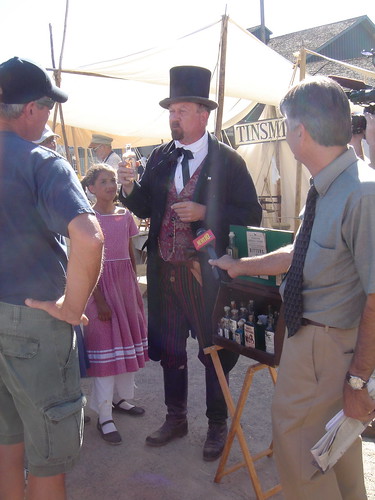Let’s say you work for a large country music festival in Prince Edward Island, Canada, and you want to quantify the value of your social network so you can get sponsors for it.
Okay, this may only apply to one of you in the entire world, but the ideas are transferable to anyone who wants to determine the value of their social network, so you can sell it to sponsors and advertisers.
Kim Doyle (@Kim_Doyle) works for the Cavendish Beach Music Festival, which is held every July. I emailed a response to her and then figured it would make a good blog post, especially since I love going to music and art festivals, and am hoping one of them will arrange an onsite consulting gig at the festival. (I’m just sayin’.)
What is the Value of a Social Network?
Basically, the statement you want to be able to make to your sponsors is “our network will have X value to you.”
This is a little tough for a new network, because it has no “value,” since it’s still unproven. But an established network has more value, because you know how big it can get, you’ve already seen what it can do, and you’ve been delivering clicks and eyeballs to your other social properties.
We can’t say for certain what value the network will be until AFTER the festival happens. Next year, you can demonstrate last year’s numbers. And if you’ve been doing it for a few years, you can show growth. But it’s hard to say, our network will deliver X visitors.
That’s because you need to be able to trace the interactions and transactions from your network to the sponsor’s properties, and they need to trace what happens from there. But if they’re not doing any monitoring or measuring themselves, then they have no idea what those visitors are worth. You can only show them raw numbers, but it’s up to them to demonstrate the value.
Measuring the Social Media Traffic
1) Show them how you can track all the visitors to your website, all the members of your social network, and measure the amount of time they spend interacting with the site and with each other.
You’ll do this through Google Analytics (# of visitors, time on site, # of pages visited), Klout score (especially your influence and reach), Facebook analytics, and Bitly (# of links clicked).
Include links on your blog (“Please visit our sponsors who make this possible. The more you visit, the more they support us.“), and count the number of times people click those links. Post links to their sites via Twitter (“we want to thank Floaty Bits Bottled Water for supporting Cavendish Beach Music. Visit them here.”)
If you can show those numbers, you can show sponsors what you can deliver. If this is a new venture, start measuring the size of your network, plot its growth, and see if you can start driving traffic to your site in order to show potential.
2) Show them the demographics of who they will be reaching. If you can know a few demographics of the people who come to your festival, you can show sponsors why you’re going to reach them better than traditional mass media.
For example, if a big part of your audience falls within Generation Y, you can find articles and studies that show a lot of Generation Y doesn’t watch TV, they Tivo it and skip commercials, or they watch a lot of YouTube videos on their mobile phones. So create promotional videos, put them on YouTube with a sponsor’s logo in the bottom right corner just like on TV.
See how many different ways you can drive traffic to the video, and measure each channel to see what drove the most traffic (use different Bitly links per source, 1 for Twitter, 1 for Facebook, 1 for the blog, etc.) Measuring that traffic will give a sponsor an idea of the kind of traffic you’ll be able to drive for them.
3) Remind them that they are going to be reaching a niche audience in a way that no one else can: they will reach a large group of people who are passionate about your festival and that music/art. But unlike the festival-only sponsors, they’ll be reaching them long before and long after the festival ends.
And not in the “your logo will be on the t-shirt” way of reaching them.
But if you’re sending out tweets that point to videos with a sponsor’s logo on it, and those fans watch the videos to see who will be playing, or to see a recap of the last festival, those sponsors get more exposure than the ones who were only visible during the festival itself. And any links from the YouTube page to the sponsor’s page can have a major positive impact on their search engine placement.
Consider doing a daily/nightly recap of the festival each day. Treat it like a little newscast where a “reporter” is on scene (film it with a high-def digital camera, not a mobile phone), interviewing artists and fans, showing a few seconds of the artist playing, and then putting it all into a YouTube video (complete with sponsor logo). Tweet that out a few times the next day, let people access it via QR code, and put it on Facebook for the fans who couldn’t make it, and count the traffic there too.
These are just a few ways music and arts festivals can find a sponsor specifically for their social media marketing and social networking efforts. These kinds of affinity groups can be a marketing goldmine for marketers because they’re reaching a dedicated niche audience who has an affinity for that festival, and are more inclined to support people who support something they love.
Photo credit: theburied.life
